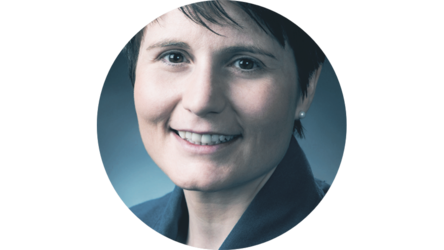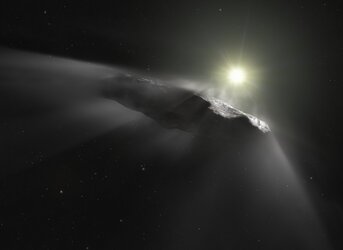Five new teams selected for the ESA Academy Experiments Programme
The ESA Academy Experiments Programme is an educational initiative designed to enhance university students' learning by offering them the opportunity to design and conduct innovative experiments on various gravity-related platforms and in space. This year, the programme cycle focused on two platforms: Parabolic Flights and the ESA Orbital Robotics Lab. Following the Call for Proposals, ESA received numerous excellent applications from universities across Europe. Shortlisted teams were invited to present their projects to a panel of experts from ESA and its partner organisations. After thorough evaluation, the panel selected five exceptional new teams to participate in this cycle of the ESA Academy Experiments Programme, with the primary goal of equipping students with the skills and knowledge to execute such experiments on these advanced platforms.
Advancing Space Robotics and Human Adaptation at the Orbital Robotics Lab

Three teams will carry out experiments at the ESTEC Orbital Robotics Lab (ORL) to push the boundaries of autonomous robotics and human adaptation in microgravity. The Skywalker team, from Aalborg University (Denmark), will develop and validate Reinforcement Learning controllers for a free-floating robotic platform equipped with a robotic arm. Their goal is to enable autonomous crawling on structures in microgravity, which could significantly enhance robotic capabilities for assembling and maintaining large space structures.
Also utilising the ORL’s unique microgravity simulation environment, the GRASP team from the Sapienza University of Rome (Italy) will investigate the effectiveness of a gecko-adhesive-based gripper for autonomous rendezvous and capture scenarios. This experiment will evaluate the gripper’s ability to securely grasp non-cooperative objects, a crucial capability for satellite servicing and space debris removal.
Meanwhile, the V-STARS team, a collaboration between Birkbeck, University of London, and the University of Kent (UK) will study the effects of microgravity on human perception of verticality. Using the ORL’s free-floating platform, they will explore whether stochastic resonance and Galvanic Vestibular Stimulation can improve astronauts’ spatial orientation, a key factor for safety and performance during spaceflight.
Investigating Fluid Dynamics and Bioreactor Technology in Microgravity
Two teams will take part in an Air ZeroG parabolic flight campaign in September 2025 to perform experiments in microgravity. The CAVE 0g team, from the University of Ljubljana (Slovenia) will examine how emulsions form under microgravity using acoustic cavitation. Their research could improve our understanding of emulsion stability, with potential applications in space-based manufacturing, pharmaceuticals, and food production.

Also onboard the Novespace A310 Zero-G aircraft, the MVIPER team from the Technical University of Munich (Germany) will test a small-scale demonstrator for a novel vortex photobioreactor based on magnetohydrodynamics for algae-based life support systems. Their experiment focuses on flow characterisation and liquid-gas separation without moving parts, aiming to enhance photobioreactor technology for long-duration space missions.
Following the official kick-off at the end of February 2025, held at both ESTEC (The Netherlands) and Novespace (France), the teams had the opportunity to meet experts, attend specialised courses, and, for those at ESTEC, take part in hands-on activities within the Orbital Robotics Lab, where they will be testing their experiment. They will now be supported by the ESA Academy, mentors from the European Low Gravity Research Association, and experts from the different platforms to refine their scientific and engineering requirements, as well as to design, develop, and test their experiments.
In addition to these new projects, two more teams are further advancing the design of their experiments for potential allocation on a Space Rider flight. Team SPARKLE is developing a compact detector for charged particles, gamma-rays, and X-rays, aiming to study space phenomena and demonstrate spectrometer miniaturization. Meanwhile, team OSCAR-PINQ is working on a quantum magnetic field sensor based on diamond to precisely measure Earth's magnetic field, with potential applications in aerospace, navigation, and medicine. Finally, team SCAMPI is in the qualification phase for a mission to the International Space Station, where they aim to study the long-term effects of microgravity on an ecosphere containing shrimps and algae.
Should these teams have piqued your interest in hands-on space-related projects, and you wish to develop your own student experiment, you can check for current opportunities within the ESA Academy here.















 Germany
Germany
 Austria
Austria
 Belgium
Belgium
 Denmark
Denmark
 Spain
Spain
 Estonia
Estonia
 Finland
Finland
 France
France
 Greece
Greece
 Hungary
Hungary
 Ireland
Ireland
 Italy
Italy
 Luxembourg
Luxembourg
 Norway
Norway
 The Netherlands
The Netherlands
 Poland
Poland
 Portugal
Portugal
 Czechia
Czechia
 Romania
Romania
 United Kingdom
United Kingdom
 Slovenia
Slovenia
 Sweden
Sweden
 Switzerland
Switzerland

























